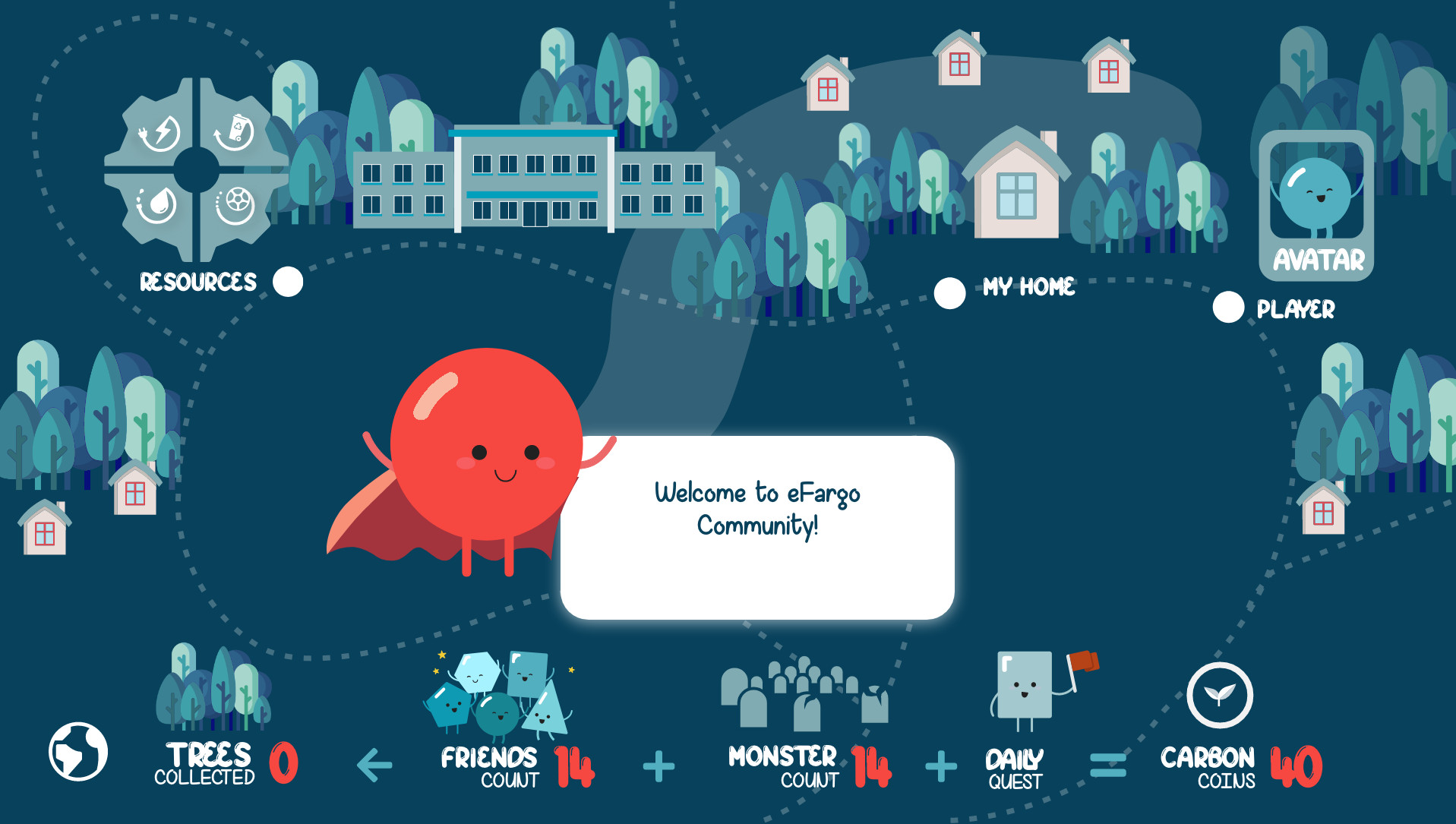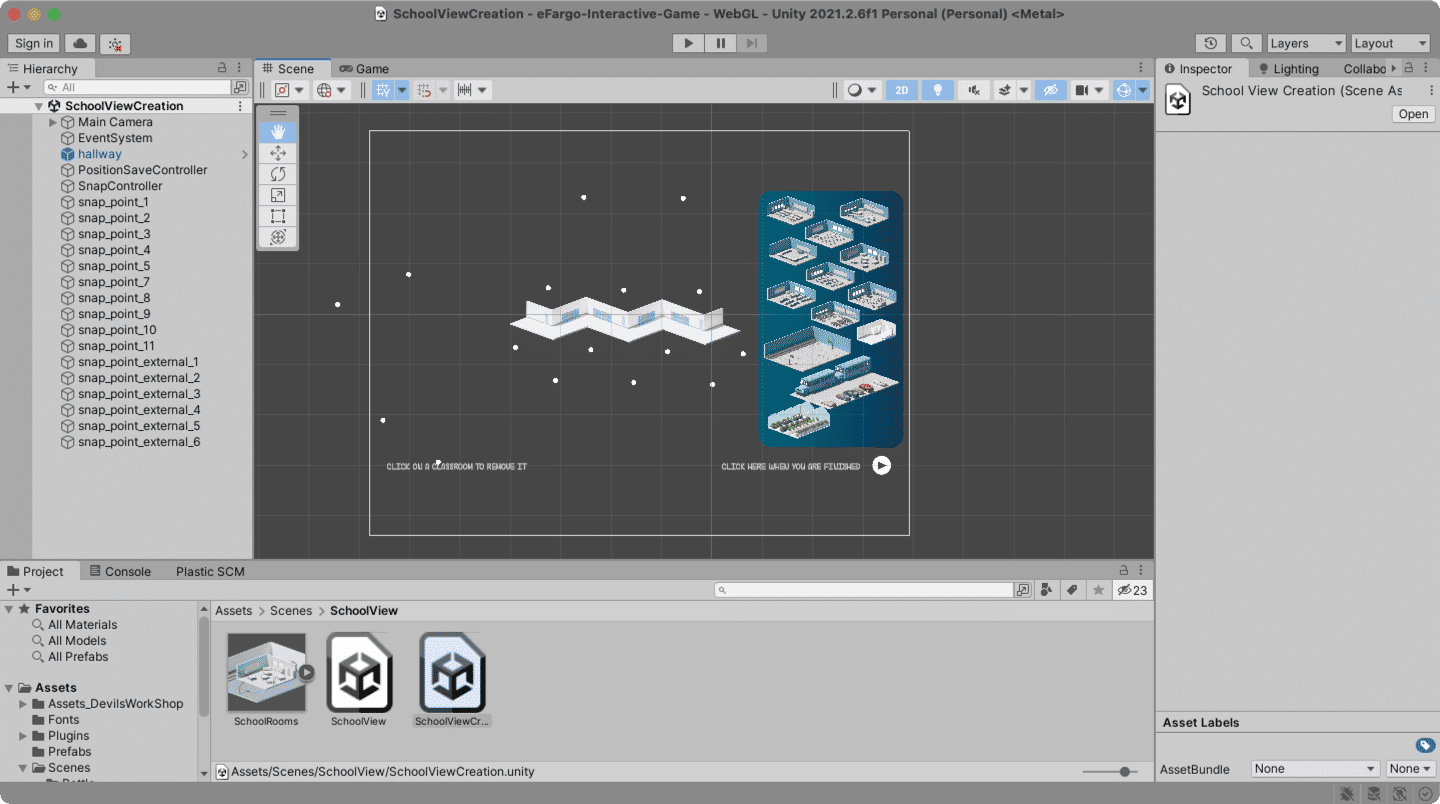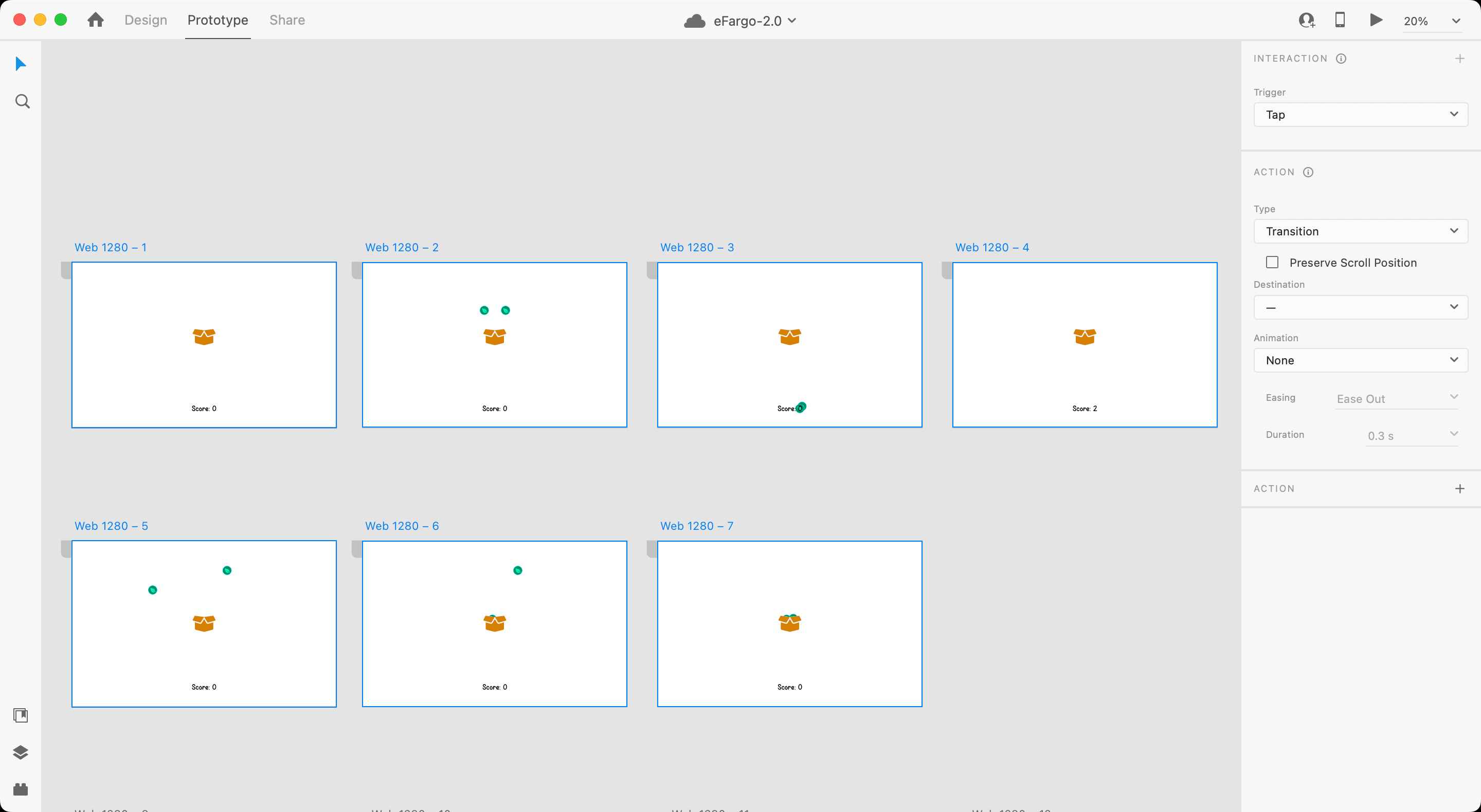
MY ROLE:
Co-PI, Designer & Advisor in UI/UX Design and Development
- Supervised overall user experience
- Advised visual design concepts
- Directed the prototype creation
- Recruited the game developer
- Advised the development in Unity
- Implemented part of the program with JavaScript
- Assisted the project PI to finish the final report
TIME:
May 2021 – June 2022
COLLABORATED WITH:
AWARD:
1. Introduction
eFargo is an interactive game for public schools to help reduce carbon emissions and energy use to fight climate change. The students learn about energy consumption and complete awarded tasks to decrease energy waste in practice. My responsibility in this project was advising overall user experience, and user interface design, as well as prototype development with JavaScript and Unity. The project received the R+D Award offered by Architect Magazine, a top architecture design journal in the U.S. As the representative of NDSU, I was invited to the ceremony event at the Architect Live conference in Washington, D.C.
2. Design Advising
During the COVID-19 pandemic, the team worked together remotely. We hold weekly meetings at Zoom to get design updates and give feedback. In addition to real-time communications, we also used collaboration tools like Miro board and Google Drive to share ideas and files.
Game UI Design
A senior architecture student joined us as the UI designer. We worked closely on the design and communicated frequently.
Examples of game UI, designed by Java Nyamjav, advised by Aaron Yang
Interactive Prototype
To test our design and communicate the design with the developer, we created an interactive prototype in Adobe XD. The prototype simulates the animation and interactions on game onboarding, space construction, challenge, and rewarding. I instructed the designer on the prototype making and software use. For key interactions, I recorded video demos to help her understand better. She learned very fast and did an excellent job.

3. Game Development
Considering the future maintenance and expending of the game, we selected Unity as the game engine because it is the most popular software and well documented. I helped the team recruit a game developer from the Department of Computer Science at NDSU. After interviewing five candidates, we accepted a senior student, Erick Bickler, who later joined Amazon AWS group. I designed the higher-level system and supervised his work by viewing the code and providing feedback.

4. Future Work
Currently, a small-scale testing has been finished with the hi-fi prototype, and the game in Unity is still under development. In the future, we will expand this game from a fixed design to a customizable platform that a teacher can configure the game challenges and awards for the students, which will benefit more schools.
Other Featured Projects
ADL 1-2-3 Device
A gamified system that saves young patients’ lives by finishing daily hygiene activities.
Simple Booking
A space-scheduling system that helped students reserve a space in facilities during the pandemic.
SoDAA Alumni Map
An interactive map that shows the alumni network of NDSU SoDAA.






